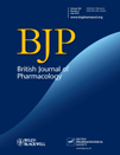1476-5381/asset/olbannerright.gif?v=1&s=0b2124237bd4227e7991f1ea05cd4bed2496a9ae)
 TRPV1 and SP: key elements for sepsis outcome?
TRPV1 and SP: key elements for sepsis outcome?
Summary
Sensory neurons play important roles in many disorders, including inflammatory diseases such as sepsis. Sepsis is a potentially lethal systemic inflammatory reaction to a local bacterial infection, affecting thousands of patients annually. Although associated with a high mortality rate, sepsis outcome depends on the severity of systemic inflammation, which can be directly influenced by several factors including the immune response of the patient. Currently, there are a lack of effective drugs to treat sepsis, and thus there is an need to develop new drugs to improve sepsis outcome. Several mediators involved in the formation of sepsis have now been identified, but the mechanisms underlying the pathology remain poorly understood. The transient receptor potential vanilloid 1 (TRPV1) receptor and the neuropeptide substance P (SP) have recently been demonstrated as important targets for sepsis and are located on sensory neurones and non-neuronal cells. Herein, we highlight and review the importance of sensory neurones for the modulation of sepsis, with specific focus on recent findings relating to TRPV1 and SP, with their distinct abilities to alter the transition from local to systemic inflammation and also modify the overall sepsis outcome. We also emphasise the protective role of TRPV1 in this context.

